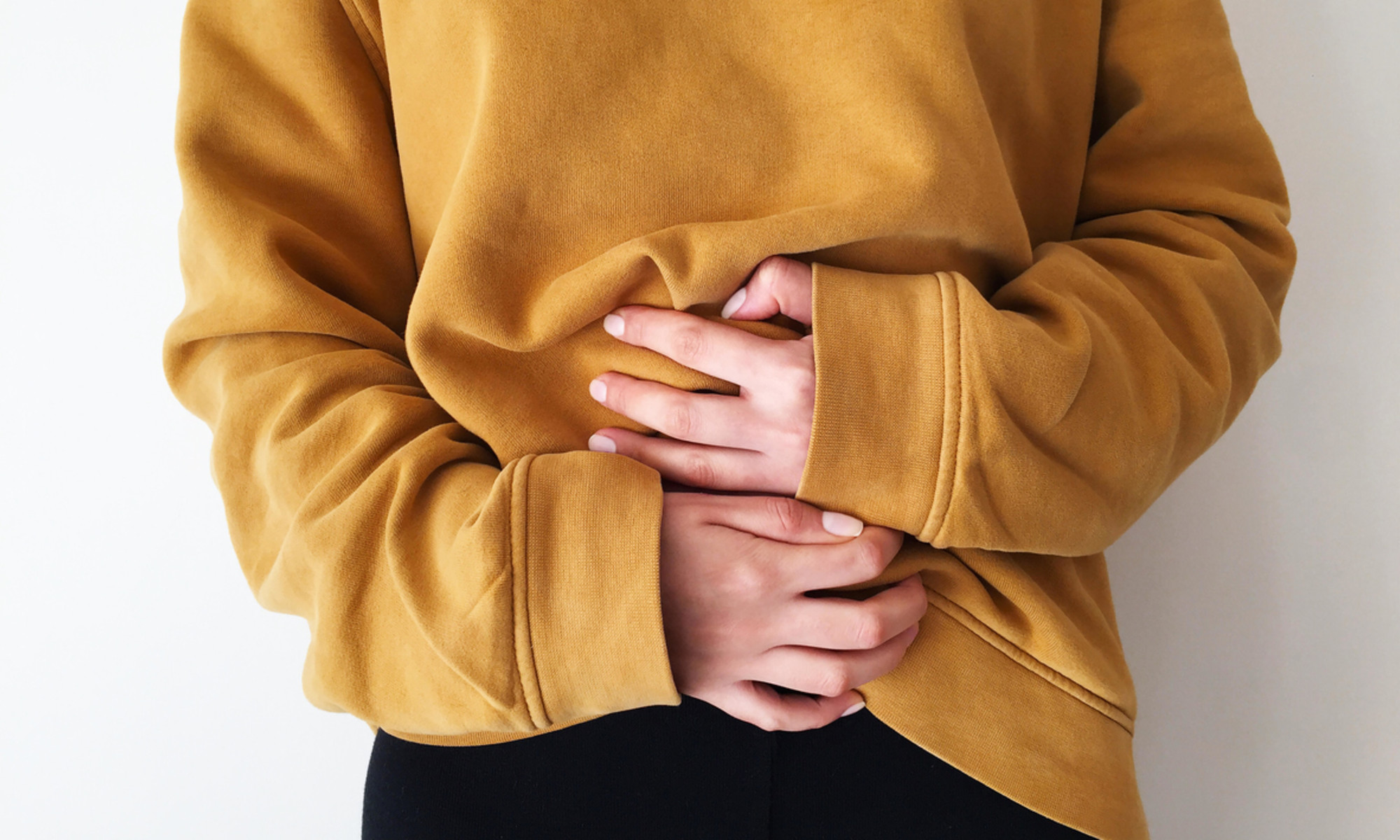What Does “Bad” Gut Bacteria Actually Mean & How Can I Get Rid Of It?
A microbiome researcher breaks it down into simple terms.


Clinical Researcher
By Christine Tara Peterson, PhD, AHP, RYT
Clinical Researcher
Dr. Christine Tara Peterson PhD AHP RYT is a highly accomplished practitioner and researcher in Ayurveda and Yoga. She has a background in Microbiology & Immunology, which she has integrated with her knowledge of Ayurveda and Herbal Medicine to become a renowned expert in the field.
Image by Yazgi Bayram / iStock September 6, 2023 The human gut, often referred to as the "second brain," is a complex ecosystem teeming with trillions of microorganisms, collectively known as the gut microbiota. This intricate community of bacteria, viruses, fungi, and other microorganisms plays a vital role in maintaining our overall health and well-being. Among these microorganisms, there exists a balance between "good" and "bad" bacteria, each influencing various aspects of our health. As a microbiome researcher and clinician focused on gut health, I think about this balance often.
Advertisement
This ad is displayed using third party content and we do not control its accessibility features.
Let's explore the distinction between good and bad bacteria in the gut and delve into strategies to promote a healthy microbiota.The good, the bad, and the balance
The gut microbiota is far from a monolithic entity; rather, it is a diverse and dynamic collection of microorganisms, each with its own set of functions.
"Good bacteria," sometimes referred to as probiotics, are beneficial microorganisms that aid in digestion, produce essential nutrients, and support a robust immune system.
We are more than what we eat. Rather, we are what we digest and absorb. These beneficial microbes help facilitate this process and enhance our digestive efficiency by degrading dietary nutrients. Subsequently, these beneficial bacteria produce metabolites that help maintain a healthy gut lining, which is crucial for nutrient absorption and protection against harmful invaders.
On the other hand, so-called "bad bacteria," or pathogenic bacteria, are microorganisms that can disrupt the delicate balance of the gut microbiota and lead to various health issues under certain circumstances. Some of these bacteria are opportunistic pathogens. Normally present in low abundance, under certain conditions like stress or poor diet, these pathogens are able to seize the opportunity and increase their numbers, which leads to symptoms.
An overgrowth of bad or opportunistic bacteria has been linked to conditions such as irritable bowel syndrome (IBS)1, inflammatory bowel disease (IBD)2, and even obesity3. These bacteria can trigger inflammation, compromise gut barrier integrity, and produce harmful metabolites.
How to reduce undesirable bacteria in the gut
Maintaining a healthy balance of gut bacteria is essential for overall health. Here are some of my favorite strategies to help reduce bad bacteria in the gut:
Advertisement
This ad is displayed using third party content and we do not control its accessibility features.
1.
Limit sugar and processed foods
A diet rich in processed foods, sugars, and unhealthy fats can fuel the growth of bad bacteria and have been linked to gut microbiome imbalances4. Harmful bacteria tend to thrive on sugars and simple carbohydrates, leading to an overgrowth that can disrupt gut health.
Limiting the intake of sugary and processed foods can help create an environment where beneficial bacteria can flourish. Reduce the consumption of these inflammatory foods that lack fiber and nutrient density. Switching to a diet high in fiber, whole grains, lean proteins, and a variety of fruits and vegetables can help create an environment less favorable for harmful bacteria.
Taking probiotic supplements or consuming foods rich in probiotics, such as yogurt, kefir, sauerkraut, and kimchi, can introduce beneficial bacteria to the gut and help crowd out bad bacteria. Probiotic supplements can also be useful in rebalancing the gut microbiota, especially after a course of antibiotics or during times of digestive distress5.
These supplements contain specific strains of beneficial bacteria that can help suppress the growth of harmful microbes. However, it's essential to choose reputable brands and consider a consultation with a healthcare professional before adding probiotics to your routine.
Advertisement
This ad is displayed using third party content and we do not control its accessibility features.
Prioritizing quality sleep is essential for overall health, including a balanced gut microbiota. Poor sleep patterns can disrupt the gut microbiota and lead to an increase in harmful bacteria8. Strive for 7-9 hours of restful sleep each night to support a balanced gut environment.
Advertisement
This ad is displayed using third party content and we do not control its accessibility features.
Adequate hydration is crucial for maintaining a healthy gut. Staying adequately hydrated supports proper digestion and helps support the health of the gut lining, promoting a healthy gut environment or microbiome. Water helps transport nutrients, support digestion, and maintain the mucosal lining of the intestines. A well-hydrated gut is better equipped to flush out toxins and prevent the growth of harmful bacteria. Aim to drink plenty of water throughout the day to support optimal gut function.
How to increase beneficial bacteria in the gut
Fostering the growth of good bacteria is equally important for maintaining a balanced gut microbiota. Here's how to increase the presence of beneficial bacteria:
Advertisement
This ad is displayed using third party content and we do not control its accessibility features.
1.
Incorporate fermented foods
In addition to probiotic supplements, incorporating fermented foods like kombucha, miso, and tempeh into your diet can introduce a variety of beneficial bacteria strains to your gut.
Prebiotics are non-digestible fibers that serve as food for good bacteria. Foods like garlic, onions, leeks, bananas, and asparagus are excellent sources of prebiotics and can promote the growth of beneficial microbes.
Medicinal herbs and spices are also prebiotics and excellent ways to increase your fiber consumption. I love incorporating fresh herbs and spices into cooking and have even published extensively on the prebiotic effects of medicinal herbs9 and spices10 on our gut microbes.
RELATED READ: Prebiotics vs. Probiotics: Differences, Benefits + Foods
3.
Prioritize plant-based diversity
Eat a wide variety of plant-based foods to help increase the number and diversity of good gut microbes. A varied and plant-focused diet can provide a wide range of nutrients and compounds that feed beneficial gut bacteria.
Phytonutrients found in fruits, vegetables, and herbs have been linked to promoting the growth of specific strains of good bacteria11. Legumes, whole grains, nuts, and seeds are excellent sources of phytonutrients and fiber that can support the growth of beneficial microbes. Aim to include a broad spectrum of colorful plant-based whole foods to provide nourishment for a diverse microbiota.
The takeaway
The balance between good and bad bacteria in the gut is crucial for maintaining digestive health, supporting the immune system, and preventing various health issues. Remember that progress takes time, and small, sustainable changes can lead to substantial improvements over the long term. By steadily adopting a diet focused on whole, plant-based foods, incorporating probiotics and prebiotics, managing stress, and making lifestyle adjustments, we can nurture a thriving community of beneficial bacteria in our gut and promote overall well-being.

 Troov
Troov 































